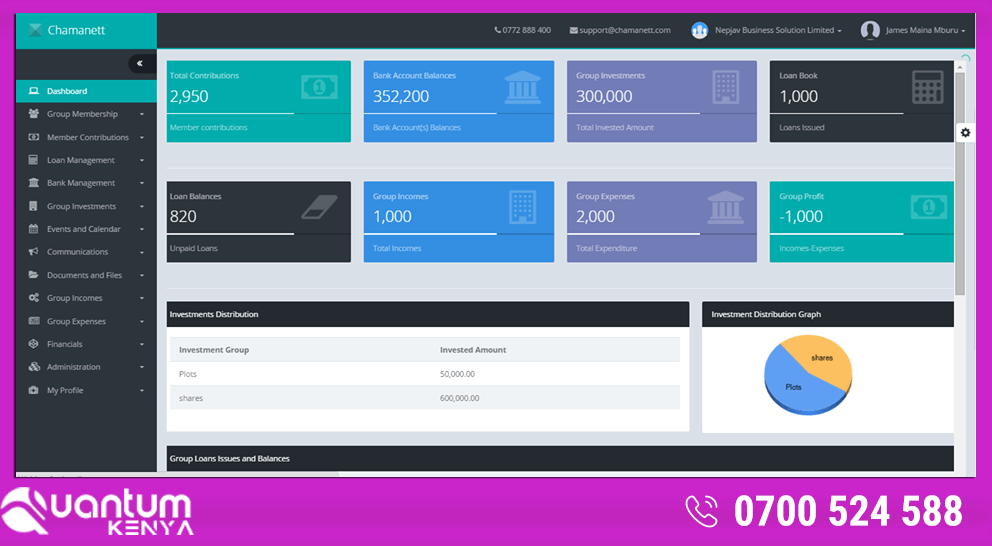
Chama Software | Table Banking Software
- Phone :
- Website :
Chama Soft
Table banking is a form of community-based financial arrangement that involves a group of individuals coming together to pool their resources and create a self-help banking system. This concept is particularly popular in many developing countries and is often utilized by women’s groups, small communities, or grassroots organizations. The primary goal of table banking is to promote financial inclusion, empower community members economically, and foster a sense of self-reliance. Here’s how table banking typically works:
- Formation of a Group:
- Individuals within a community or a specific group come together to form a table banking group. This group is usually comprised of people who trust each other and have a common financial goal.
- Regular Contributions:
- Each member of the table banking group makes regular financial contributions, typically on a weekly or monthly basis. The amount contributed by each member is agreed upon by the group.
- Pooling of Resources:
- The contributions from all members are pooled together to create a collective fund. This fund becomes the basis for providing financial services to the group members.
- Loan Disbursement:
- Members of the table banking group can then take turns borrowing from the pooled funds. Loans are often provided at low or no interest rates, and the repayment terms are agreed upon by the group.
- Interest and Penalties:
- If interest is charged on loans, the collected interest is usually added to the pool, benefiting all members. Similarly, penalties for late repayments contribute to the overall fund.
- Accountability and Transparency:
- Transparency is a key principle in table banking. Regular meetings are held where financial transactions, loan disbursements, and repayments are discussed openly. This promotes accountability and trust among group members.
- Social Support and Networking:
- Beyond financial transactions, table banking fosters a sense of community and social support. Members often share knowledge, experiences, and offer each other advice on various matters, not just limited to finance.
- Rotational Leadership:
- Leadership roles within the table banking group may rotate among members, ensuring that everyone has a chance to participate in decision-making and administration.
- Savings Component:
- In addition to the loan component, table banking often includes a savings component. Members are encouraged to save a portion of their contributions for future needs or emergencies.
Table banking is a grassroots approach to financial inclusion and empowerment, providing individuals who may not have access to traditional banking services with a means to save, access credit, and build a support network within their community. It is a model that emphasizes community cooperation, self-reliance, and mutual benefit.
